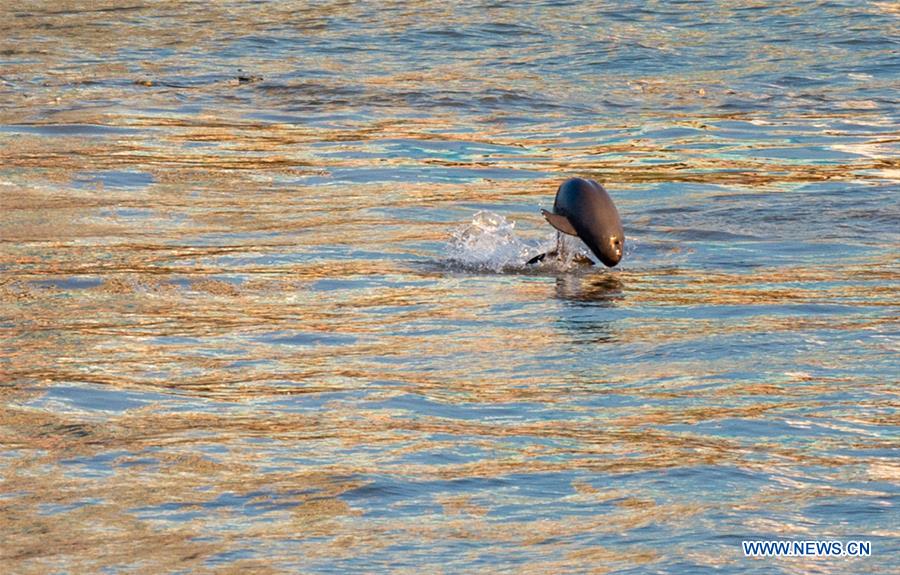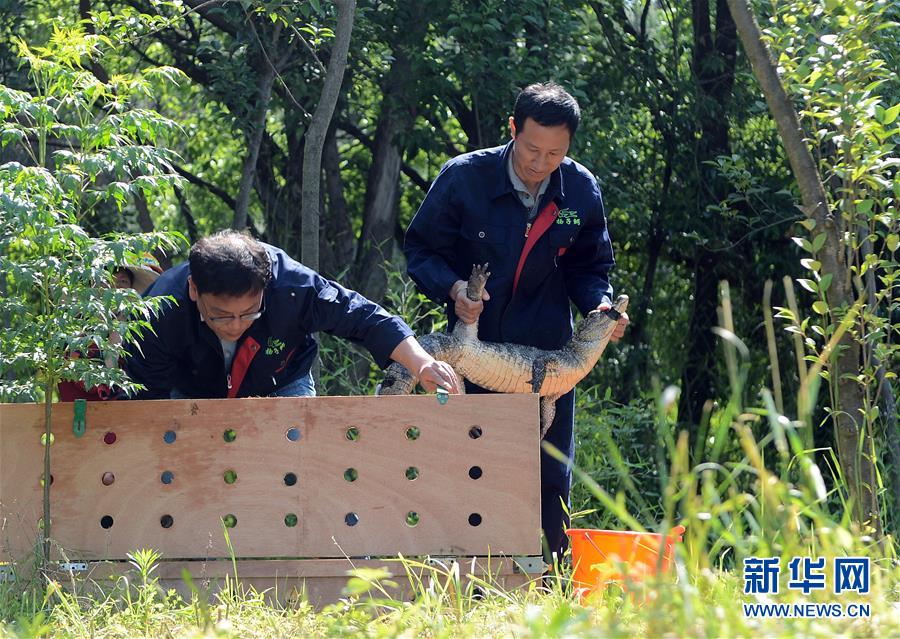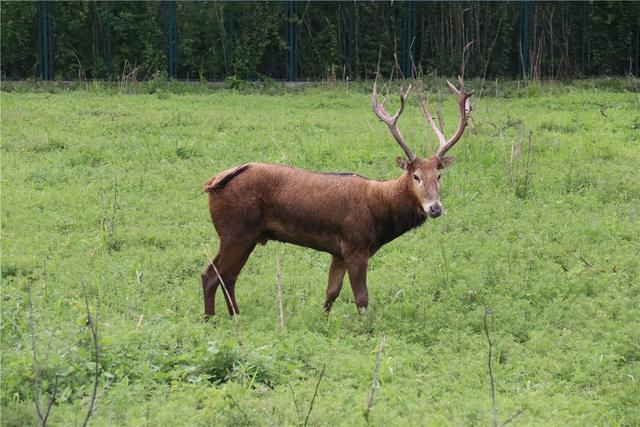

In September 2020, a group of highly endangered Yangtze finless porpoises were seen in the Yangtze River in Wuhan, central China’s Hubei province. The rare scene was recorded in a short video by a local resident and soon attracted attention online.

A finless porpoise is seen in the Yangtze River in Yichang, central China's Hubei Province, Aug. 3, 2020. The finless porpoise, an endemic species in China, is an important indicator of the ecology of the Yangtze. (Xinhua/Lei Yong)
The appearance of Yangtze finless porpoises is a result of declining interference from human activities or an increase in food availability, experts say.
According to statistics, in the 1990s, there were about 2,700 finless porpoises in the Yangtze River, with the number dropping to 1,012 in 2017 according to a scientific research on the species. However, no finless porpoise was spotted in the Wuhan section of the river in the 2017 research, or two research activities before that.
Researchers discovered that interruption from human activities, such as extensive fishing practices, have affected the activeness of the species in the Wuhan area.
In 2020, the Wuhan government issued 10 measures to protect Yangtze finless porpoises. The city strengthened the fishing ban to increase food supply for the species, built a habitat along the Yangtze River for the species to breed, and improved the quality of water in designated areas.
Data showed that there are more than 4,300 kinds of aquatic life living in the Yangtze River basin, including more than 400 types of fish. Not only Yangtze finless porpoises, but the population of other endangered animals as well, such as Yangtze alligators and milu deer, also known as Pere David's deer, have expanded in recent years as well.
In September 2020, two caves for Yangtze alligators were discovered at a reservoir in Xuancheng, east China’s Anhui province, indicating that the captive Yangtze alligators released into the wild had adapted to their new habitat.

Yangtze alligators are released into the wild in Jingxian county, Anhui province on May 20, 2020. (Xinhua/Han Xiaoyu)
Wild Yangtze alligators mainly live in the southeastern part of east China’s Anhui province and Zhejiang province. A research carried out by a conservation center showed that there were 113 Yangtze alligators in the wild in the area of the center in 2018, compared with 63 in 2015.
The Xuancheng Yangtze alligator national conservation area, a place built to rescue the first-class protected animal in China, has been actively conducting research on the breeding of wild alligators and releasing the animal into the wild.
Between 2003 and 2020, the center released 508 captive alligators into the wild, while continuously monitoring and researching the animals to see how they have adapted to the natural habitat. As they have found, most of the alligators have adapted well to the wild environment.
The East Dongting Lake Milu Deer and Bird Rescue Center has been protecting milu deer since its founding in Yueyang, central China's Hunan province. Currently, there are more than 210 milu deer under the care of the center, according to Song Yucheng, a deputy chief engineer at the center, noting that five years ago, the number was only 113.

A milu deer (Xinhua/Cai Xiaoxiao)
Every year, generally over eight times, the center conducts joint patrol with the local forestry department to record the population, habits, habitat, and migratory route of the animal to better protect the species.
Behind these positive changes are the efforts of relevant departments to protect aquatic life in the Yangtze River basin. On Jan. 1, 2020, the country began a 10-year fishing ban on key areas of the Yangtze River to protect the river’s biodiversity. Starting from that day, the ban was observed in 332 conservation areas in the Yangtze River basin.
Over the past five years, the country has earmarked more than 1.3 billion yuan to cover financing needed to release fingerlings into the river and released a total of 26.6 billion fingerlings into the river.
 Fire brigade in Shanghai holds group wedding
Fire brigade in Shanghai holds group wedding Tourists enjoy ice sculptures in Datan Town, north China
Tourists enjoy ice sculptures in Datan Town, north China Sunset scenery of Dayan Pagoda in Xi'an
Sunset scenery of Dayan Pagoda in Xi'an Tourists have fun at scenic spot in Nanlong Town, NW China
Tourists have fun at scenic spot in Nanlong Town, NW China Harbin attracts tourists by making best use of ice in winter
Harbin attracts tourists by making best use of ice in winter In pics: FIS Alpine Ski Women's World Cup Slalom
In pics: FIS Alpine Ski Women's World Cup Slalom Black-necked cranes rest at reservoir in Lhunzhub County, Lhasa
Black-necked cranes rest at reservoir in Lhunzhub County, Lhasa China's FAST telescope will be available to foreign scientists in April
China's FAST telescope will be available to foreign scientists in April "She power" plays indispensable role in poverty alleviation
"She power" plays indispensable role in poverty alleviation Top 10 world news events of People's Daily in 2020
Top 10 world news events of People's Daily in 2020 Top 10 China news events of People's Daily in 2020
Top 10 China news events of People's Daily in 2020 Top 10 media buzzwords of 2020
Top 10 media buzzwords of 2020 Year-ender:10 major tourism stories of 2020
Year-ender:10 major tourism stories of 2020 No interference in Venezuelan issues
No interference in Venezuelan issues
 Biz prepares for trade spat
Biz prepares for trade spat
 Broadcasting Continent
Broadcasting Continent Australia wins Chinese CEOs as US loses
Australia wins Chinese CEOs as US loses